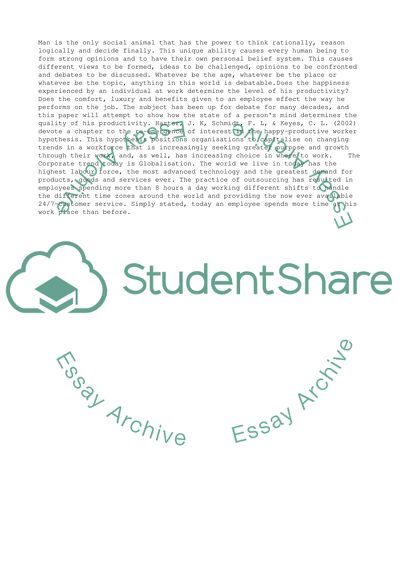Cite this document
(“The Happy/Productive Worker Thesis: More Of A Myth Than A Reality Essay”, n.d.)
The Happy/Productive Worker Thesis: More Of A Myth Than A Reality Essay. Retrieved from https://studentshare.org/management/1535182-the-happyproductive-worker-thesis-more-of-a-myth-than-a-reality-human-resource-management
The Happy/Productive Worker Thesis: More Of A Myth Than A Reality Essay. Retrieved from https://studentshare.org/management/1535182-the-happyproductive-worker-thesis-more-of-a-myth-than-a-reality-human-resource-management
(The Happy/Productive Worker Thesis: More Of A Myth Than A Reality Essay)
The Happy/Productive Worker Thesis: More Of A Myth Than A Reality Essay. https://studentshare.org/management/1535182-the-happyproductive-worker-thesis-more-of-a-myth-than-a-reality-human-resource-management.
The Happy/Productive Worker Thesis: More Of A Myth Than A Reality Essay. https://studentshare.org/management/1535182-the-happyproductive-worker-thesis-more-of-a-myth-than-a-reality-human-resource-management.
“The Happy/Productive Worker Thesis: More Of A Myth Than A Reality Essay”, n.d. https://studentshare.org/management/1535182-the-happyproductive-worker-thesis-more-of-a-myth-than-a-reality-human-resource-management.


